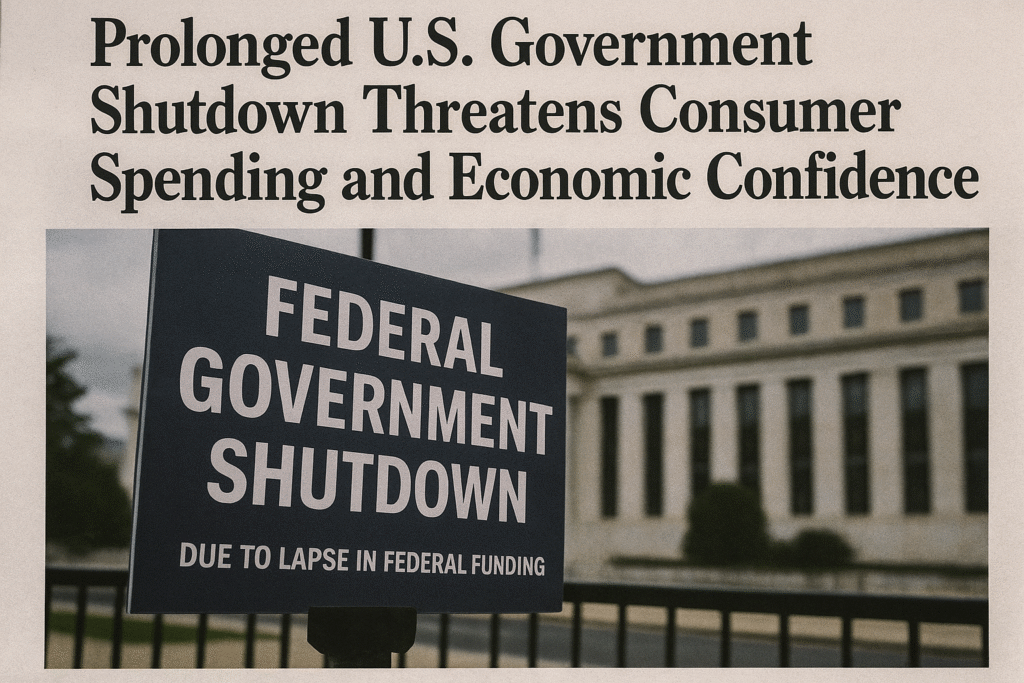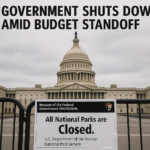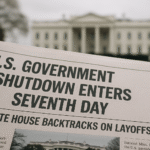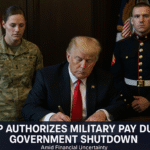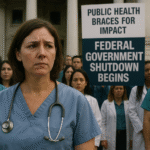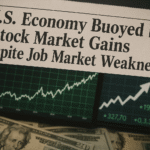By Harshit, WASHINGTON — October 15, 2025
As the U.S. government shutdown stretches on, millions of federal employees are beginning to miss paychecks, forcing households and businesses to adjust spending and raising concerns about broader economic impacts.
Michael Galletly, an IT management specialist in Utah and president of American Federation of Government Employees Local 4016, said he could survive “two months, maybe three lean, very lean months,” but acknowledged the uncertainty of the shutdown’s duration.
Immediate Impact on Federal Workers
The shutdown has already affected federal operations, delaying government approvals, shuttering museums, and snarling travel. For employees like Galletly, the financial strain is immediate: he has postponed home repairs, opted for a second-hand laptop for his daughter, and applied for unemployment insurance in anticipation of missing his first paycheck next week.
“This is my third government shutdown as a federal employee,” Galletly said. “Having been through this before, I just can’t afford to hope for the best.”
Economic Ripples
Analysts warn the shutdown is reaching a critical inflection point, with early signs of reduced business and consumer confidence. Stash Graham, managing director at Graham Capital Management, said the uncertainty is prompting companies to delay spending decisions, while the suspension of key economic data releases, such as the monthly jobs report, compounds the problem.
Historically, the economic effects of a shutdown are temporary. Analysts project a hit of roughly 0.2 percentage points per week to quarterly GDP growth, equivalent to around $15 billion, much of which is typically recovered once federal employees receive back pay.
Heightened Risks This Year
This shutdown carries unprecedented risks. The Trump administration has threatened to deny back pay and implement permanent firings, measures not typically seen in previous government closures. Combined with a slowing economy, ongoing tariff concerns, immigration policy changes, and prior spending cuts, the current shutdown may amplify economic stress.
Michael Zdinak, economics director at S&P Global Market Intelligence, said, “A short shutdown’s impact should be minimal, but a protracted one is another gamble that could derail the steady growth we’ve seen over the last couple of years.”
Government Measures and Ongoing Uncertainty
Some measures have been taken to mitigate economic pain. The administration has ensured continued pay for military personnel and maintained funding for key food programs. However, these moves have reduced pressure points that could force a rapid resolution, prolonging uncertainty.
Wells Fargo analysts warned that if the shutdown continues deep into next week, the situation will enter “uncharted territory,” as most prior shutdowns were more limited in scope.
Potential Wider Effects
S&P Global estimates that the unemployment rate could rise to 4.8% if the shutdown lasts until October 18, up from 4.3%. The White House Council of Economic Advisers projected that a month-long closure could reduce consumer spending by $30 billion, affecting not just federal workers but millions of government contractors without guaranteed back pay.
Allison, whose husband works for the Defense Department in Ohio, said her family canceled a planned fall getaway to Michigan, opting for a local day trip instead, highlighting how families are cutting discretionary spending in response to missed wages.
Summary:
The ongoing U.S. government shutdown is creating financial strain for millions of federal workers, dampening consumer confidence, and threatening broader economic stability. While the historical impact of shutdowns is often temporary, this year’s combination of prolonged closure, potential denial of back pay, and a slowing economy has raised stakes for both households and businesses.

